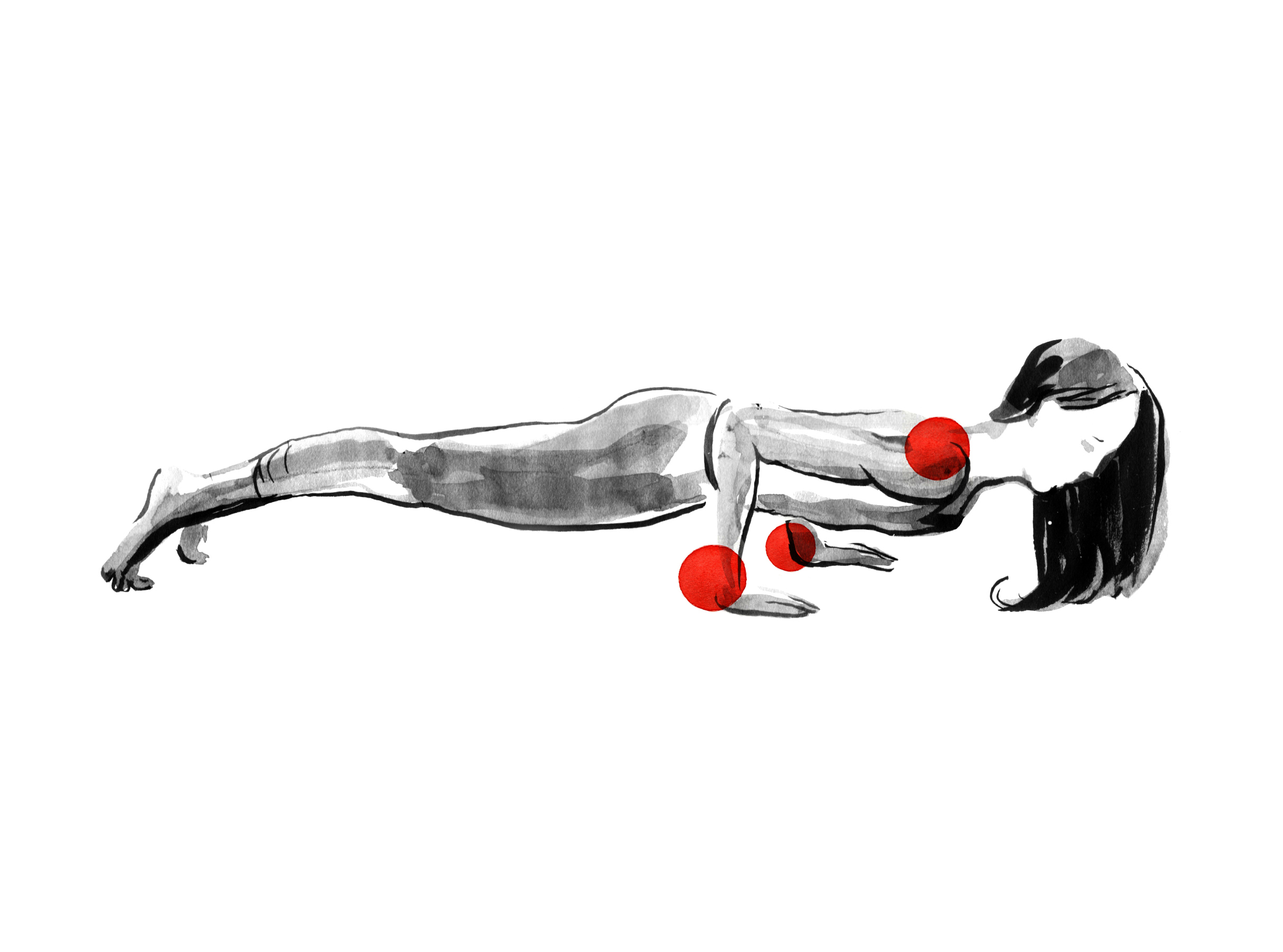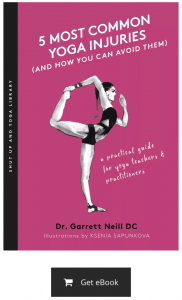Chaturanga is sometimes known as the yoga push-up. Or for some people, as the ‘shoulder shredder.’ No matter what you call it, it’s a movement that can look relatively straightforward but is actually quite complex.
Dr. Garrett Neill goes into a deeper explanation about the applied anatomy of Chaturanga, here. Take a read of his informative article if you are curious about the applied anatomy of this common pose.
This is a tutorial where we break down the component parts of Chaturanga which will serve both as assessments and exercises. Once you understand the component parts, you can happily do them forever and never do another Chaturanga again.
Or you can work on these movements to build the needed strength and mobility around the shoulder complex to make your Chaturanga more sustainable for years to come.
As a yoga teacher and movement educator, I find it super helpful to break down movements into what I call, “Movement ABCs.” These are the building blocks of healthy movement, or in other words, the smaller movements that make up more complex movements.
Once we understand the Movement ABCs, you can be more confident and intentional in how you move and, as a yoga teacher, be able to offer accessible options to your classes.
Chaturanga ABCs, or building blocks
1. Embody Your Shoulders
I love to get all nerdy about anatomy and movement, but if we only keep it as an intellectual exercise, we miss out on the opportunity to truly embody our anatomy. This means that we build an internal awareness of how our joints, muscles, fascia—all those lovely parts of us—move and feel. We can intellectually know what the glenohumeral joint does, but it’s a whole other level of knowledge when we create an intimate, connected experience of that movement. This is embodied anatomy and embodied yoga.
How To:
The first step is to simply move your arms around, wiggle your shoulders, stretch your neck and do whatever freeform movements feel good. As you move, notice the experience of your scapula, your shoulder joints. Stay in the experience of the movement, observing your movements with curiosity and care.
2. Scapular Movement
If you only have time to move one body part, try the scapula. Being able to move your scapula in all the ways is incredibly important for shoulder health. If you want to keep your shoulders feeling supple and strong for years to come, scapular mobility is key. Restriction in the scapula can affect how the humerus moves in the glenohumeral joint, resulting in over-recruitment of muscles such as your upper traps.
How To:
While standing or sitting, protract and retract your scapula. Retraction is pulling your scapulas together. Protraction is moving them apart. Repeat both movements a few times.
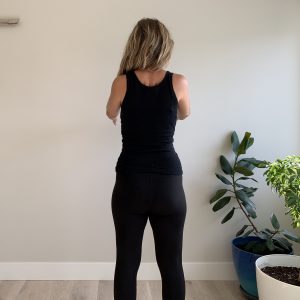
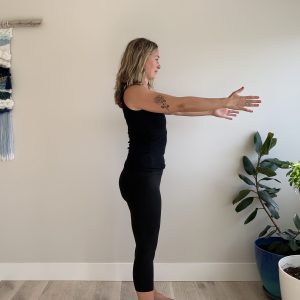
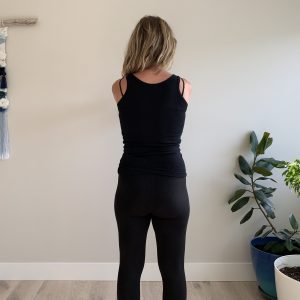

Elevate and depress your scapula. Elevation means you are lifting your scapula up toward your head. Depression means you are sliding them down toward your feet. Repeat a few times.
Put all the movements together by moving your scapula in big, slow circles. Repeat in the other direction. As you do the circles, notice how your scapulas move. Does the movement feel smooth? Does one scapula move differently than the other?
3. Scapula Circles at the Wall
Upper body strength is important in Chaturanga because we bear a large part of our weight in the pose through our arms and shoulders. Many people don’t have enough upper body strength to do Chaturanga without compensations to the shoulders, along with the needed wrist flexibility.
Taking your Chaturanga to the wall is a wonderful opportunity to increase your upper body strength while learning how to move and hold your shoulders in a more functional and supportive position.
How To:
Facing a wall, place your hands on the wall about shoulder-width apart and about shoulder height. Walk your feet away from the wall a foot or so. The further you walk away, the more body weight you’ll hold up, increasing your challenge.
Push the wall away from you with your hands and externally rotate your upper arm bone. It will look like your biceps will be rotating away from each other. Make sure your hands didn’t move with the rotation action of the upper arms.

Keeping that feeling of pushing away, start with protraction and retraction of the scapula. Repeat a few times. Make sure your elbows don’t bend during the movement. You want your arms to feel like pillars of support while your scapula moves.
Add in the scapula circles and make sure you move in both directions. You’ll likely notice that it was easier to move your scapula with your arms relaxed by your side. Many people find it more challenging to do that same movement with the hands on the wall along with the increased load of holding some body weight up.
This is a big reason why it’s important to start with our Movement ABCs. These foundational movements change when we add a load, such as holding our body weight in a tabletop or plank position. We may be able to do the movements easily without a load, as we noticed in the scapular circles. But once the arms are fixed and active and have to do more work, the link in our brain between that same scapular movement changes and it can be a lot harder. Without getting these building blocks dialled into our body first, you can see how much more challenging Chaturanga becomes and how the injury rate can increase.
If you find this version at the wall challenging, this is a great place to stay and explore in your body for a while. Repeating these ABC movements more frequently is great for both your brain and body.
4. Scapula Circles on a Chair
Here we increase the load so that we learn to maintain the strength and mobility of the shoulder complex in a position that is closer toward Chaturanga.
How To:
Place your hands either on the back of a sturdy chair or on the seat of the chair for more of a challenge. (You can also use a countertop or desk for more stability if the chair keeps moving. Or push the chair against a wall). Walk your feet behind you so that you are in a more plank-like position. The further you walk out your legs, the harder it will be.

Just as we did at the wall, push the chair away from you with your hands and do the scapular circles.
Notice the experience in this new angle and load. Do your scapulas move the same as the other variations? Is one direction easier than the other?
5. Serratus Wall Slides
Even though the angle of the arms are fairly fixed in Chaturanga, when we move into shoulder flexion, improved mobility is helpful. This is an ABC movement because healthy shoulder flexion means that we can do everyday activities without pain and because moving from plank, to Chaturanga, to downward dog is a common series of movements in yoga, we want to make sure we hold the necessary mobility throughout all those ranges.
Serratus anterior muscles help to both stabilize and move your scapula during flexion. Instead of falling into a collapsed scapula and upper back as is very common in a plank, tabletop, or Chaturanga, this exercise will help you utilize more parts of your shoulder complex more effectively.
How to:
Facing the wall, place your forearms on the wall shoulder-width apart with your hands facing each other. Pressing the wall gently away from you, protract your scapula and move your chest in toward your body and away from the wall.
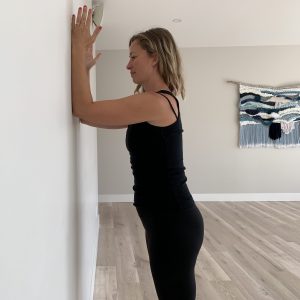
Slide your forearms up to the ceiling until you can’t move them anymore.

If you’ve never done this before, you might be surprised at how small that movement actually is! The key to this movement is getting a coordinated movement between the scapula and arm, the scapula-humeral rhythm.
As you slide your forearms up the wall, see if you can feel the bottom of your scapula wrap down and around and then slightly up toward your armpit throughout the movement. Slide your forearms down into the position you started again.
Repeat a few times making sure you are keeping the ribs moved back toward the spine (or back into your shirt if that makes more sense), your scapula relatively protracted throughout the movement.
6. Armpits of Power!
By this point, your scapulas have been moving in all the ways and by doing so, recruiting a more global experience throughout all 17 muscles that attach to them. Now we’re ready to kick on the supportive strength around the glenohumeral joint, or what I like to call, “Armpits of Power!”
Armpits of Power (AoP) is my playful way of describing the necessary mobility and stability needed when we move our arms, lift things, hold ourselves up, and lower down in Chaturanga.
How to:
To awaken our AoP, you can go back to the arms at the wall or down to a tabletop position. Press your hands into the wall or floor and notice what happens around your shoulder joint when you do that.

The more we press away, the more the tissues surrounding your shoulder joint—those muscles that create your armpit—start to kick on and the head of your humerus is lovingly held in a supportive spot.
See if you can do the scapula circles while keeping AoP. You might now realize that you had AoP in the previous movements but just didn’t notice it!
If you only did these Movement ABCs and nary a Chaturanga again, the difference in your shoulders will be huge. You’ll have built beautiful mobility and stability around your important shoulder joints to facilitate easeful movements in daily life and yoga. And once these ABCs are familiar and embodied, they will kick on for you as needed: When you ride a bike, hold a heavy basket of laundry, or pick up a heavy kid or furry friend.
Want to practice with Brea? Check out this YouTube video!
Edited by Jordan Reed
Illustration by Ksenia Sapunkova
Photos courtesy of the author

